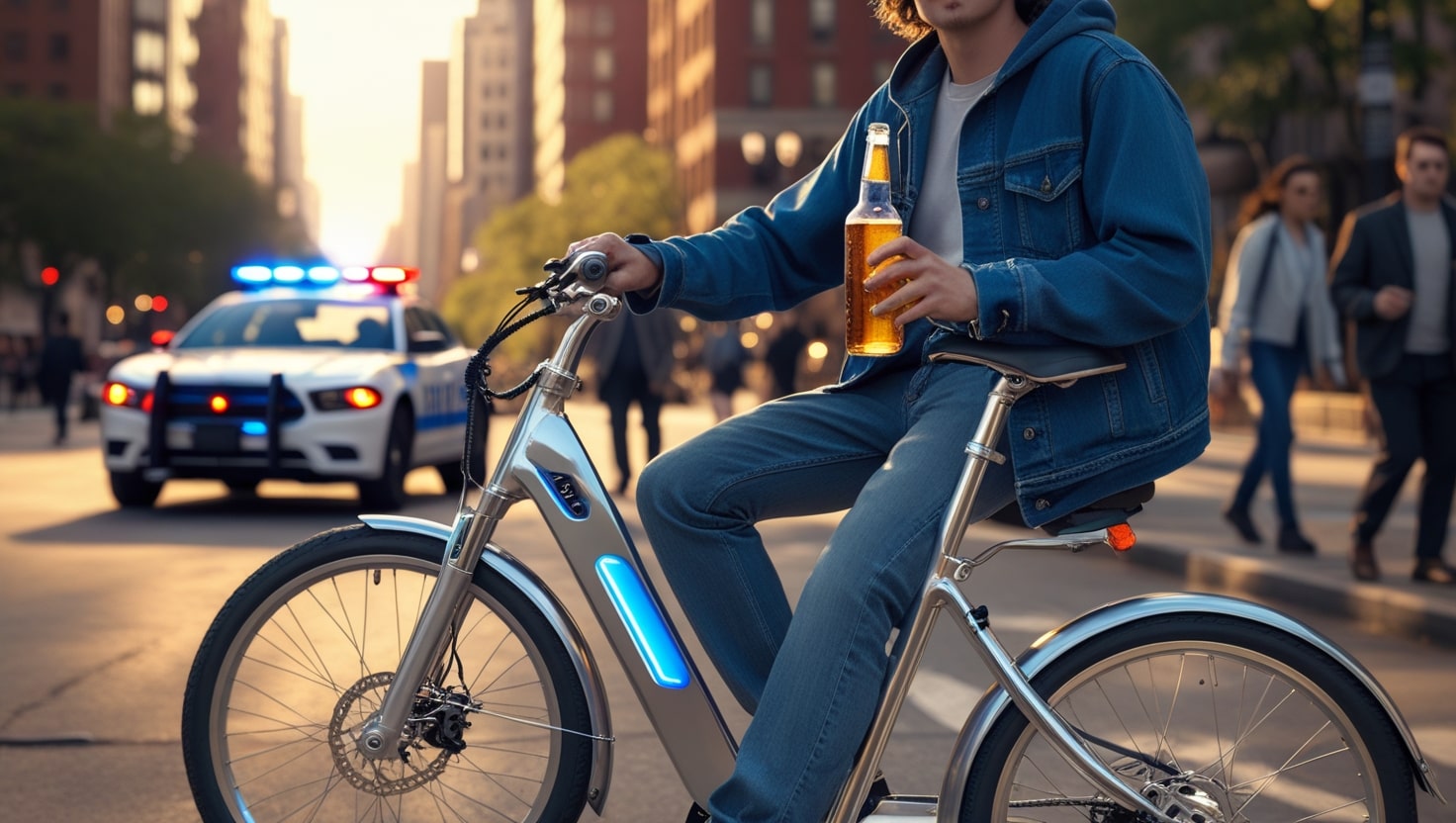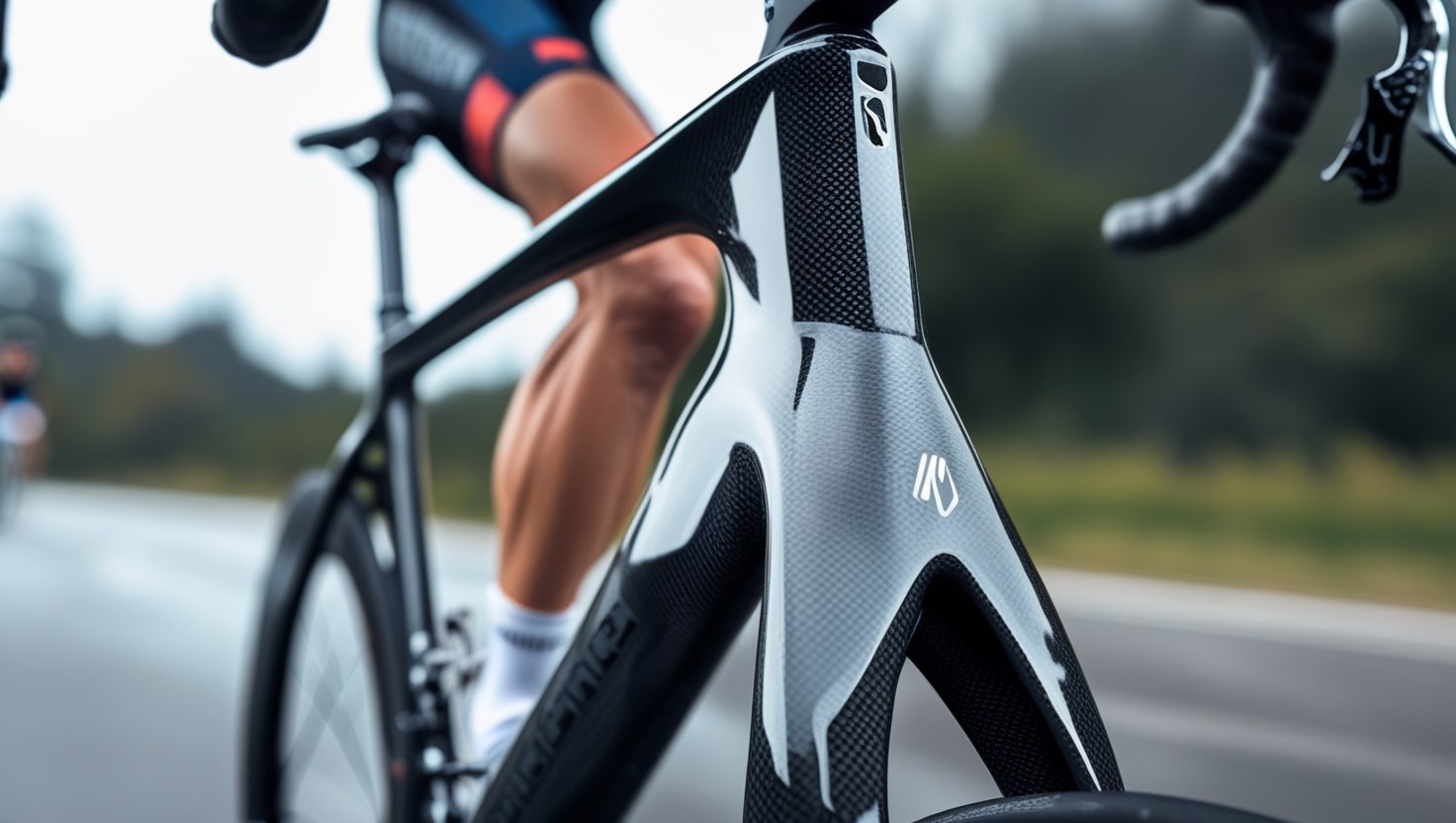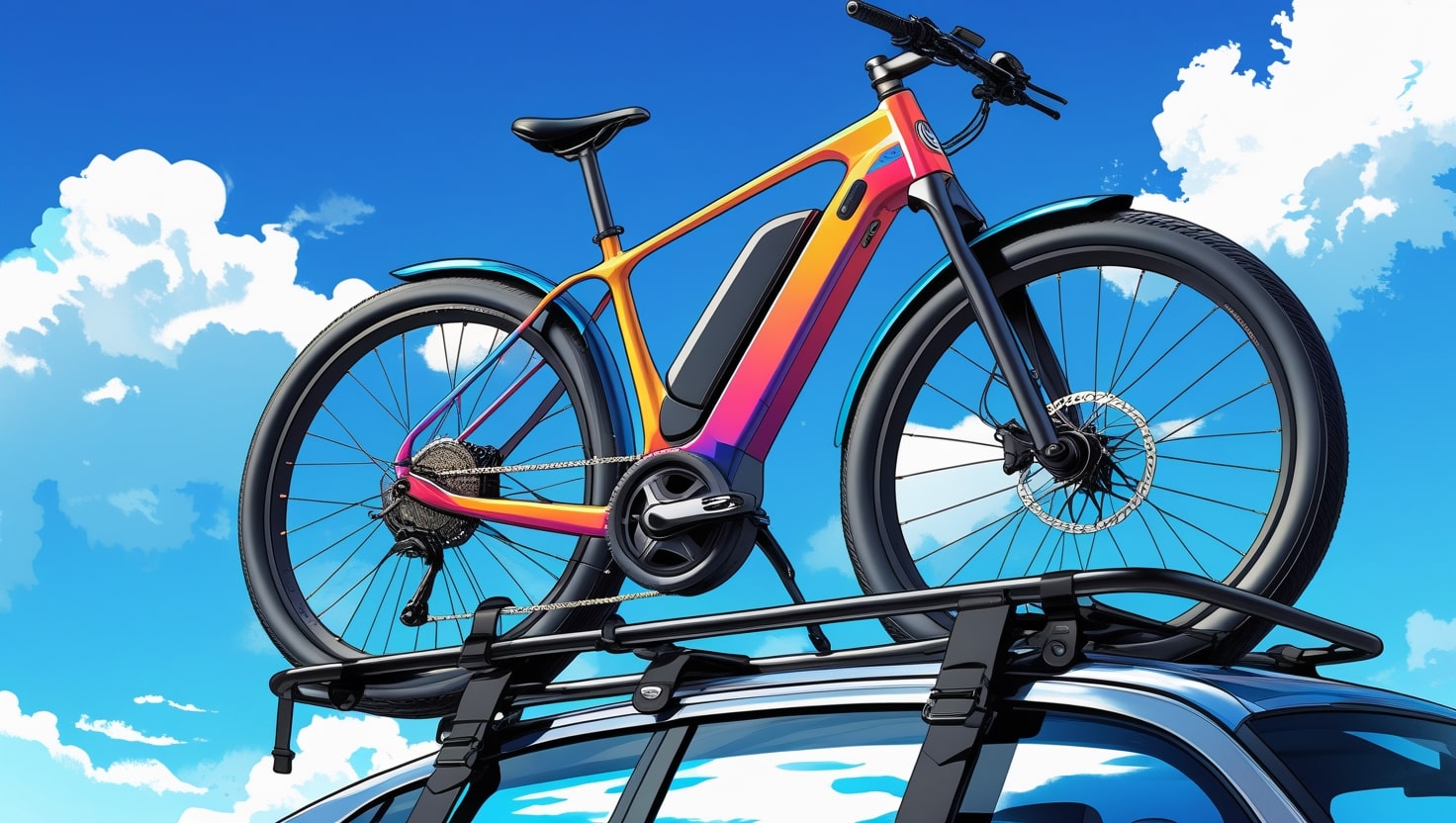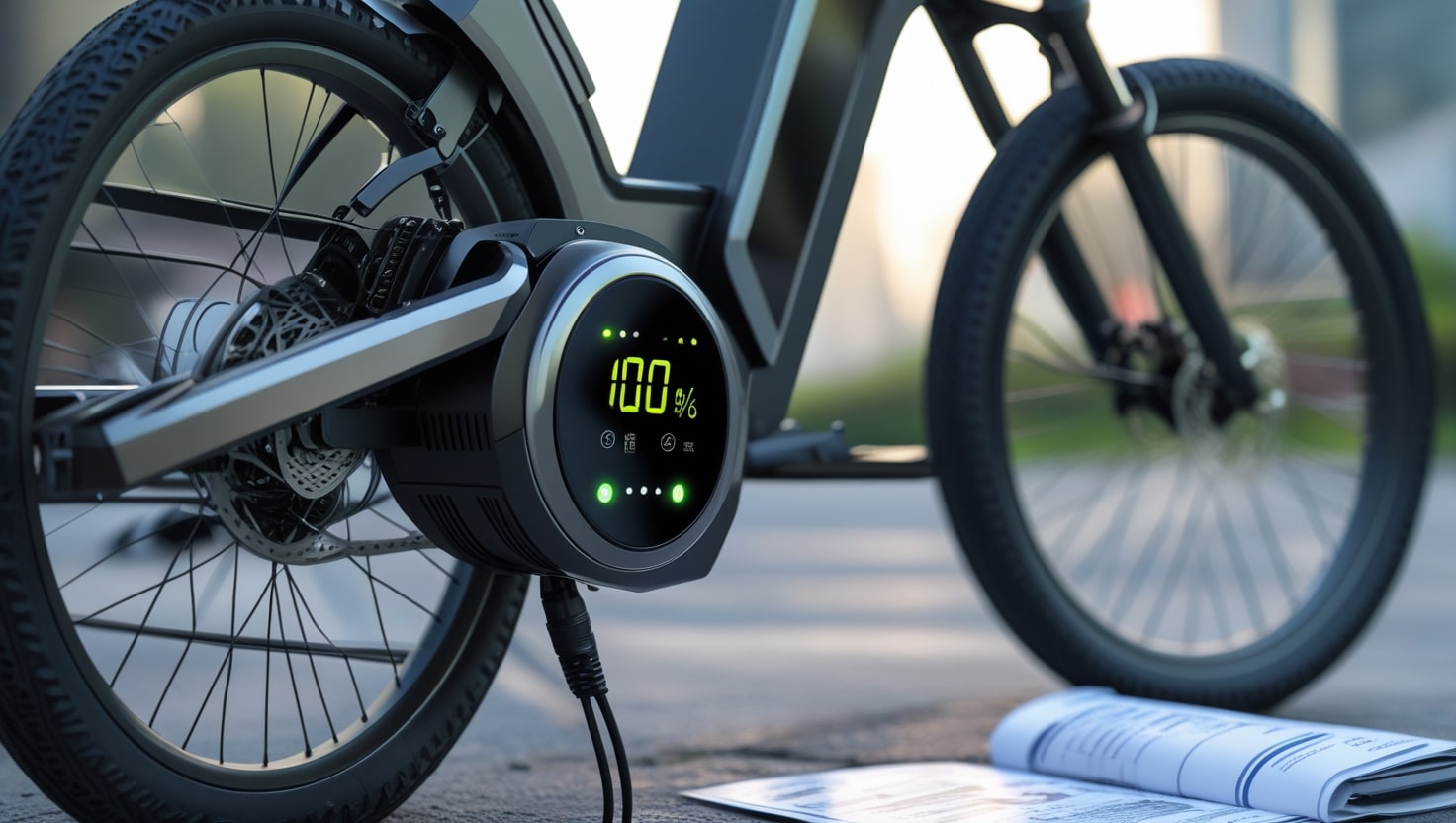Riding a mountain bike on rough terrain is thrilling, but the right grip size is essential for a comfortable and safe experience. Your hands stay in constant contact with the handlebar grips, making them one of the most crucial points of control. Poorly fitted grips can affect your ability to endure long rides and reduce your control over the bike. Properly installing the right grips not only enhances your riding experience but also helps improve handling and comfort. Since the pedals and seat also impact balance, selecting the correct mountain bike grip size can make a huge difference. This article will help you understand how to choose the best grips for your needs.
Finding the perfect mountain bike grip is all about choosing the right sizes based on hand structure and comfort. Grip length can range from 90mm to 150mm. The common inner diameter of grips is 22.8mm, but options vary between 20.55mm and 31.8mm. The outer thickness ranges from 30mm to 40mm. Riders with wider hands should choose longer grips, while those with a larger palm or thicker fingers may benefit from increased diameter for better control.
Mountain Bike Grip Dimensions
Grip Length
The grip length you install on your mountain bike can greatly affect your control and comfort. Grip lengths typically start at 90mm and go up to 150mm, covering a range of 3.5 inches to 6 inches. The type of shifter you use, especially a twist or aka grip shifter, takes up more space on the handlebars due to its broader design. If you use a grip shifter, the appropriate length may be reduced to 3.5 inches to fit properly on the handle bars.

Grip Inner Diameter
To ensure that a mountain bike grip will fit securely onto the handlebars, the inner diameter of the grip can be measured with a caliper.
Grip Outer Diameter
The size of a rider’s hands helps determine the outer diameter of mountain bike grips for the best control. Riders with larger or longer fingers should choose thicker or chunkier grips for a firm grasp on the handle without overlapping their fingers. A smaller measurement is better for compact hands to ensure comfort and reduce muscle fatigue in the arms. Holding tight on ill-fitting grips can strain the hands, while cushioning from chunky grips reduces the gap and prevents an extra air pocket, improving stability.
Related: what does 700c mean for a bike?
Factors that Might Affect Mountain Bike Grip Size
The right mountain bike grips can customize your ride, making you feel comfortable during long endurance rides. However, the grip size you need is influenced by several components on your bike. The type of gear shifter installed, the handlebar length, and the choice between lock-on or push-on grips all play a role. Additionally, the material and texture of the grips can further affect their compatibility, ensuring a secure and effective fit for better control.

Type of Shifter
The type of shifter on a bike plays an important part in deciding the right grip size. Grip shifters require more space on the handlebars, so they accommodate a shorter grip, typically around 90mm. On the other hand, electronic or trigger shifters allow for longer grips, usually around 130mm, providing better handling and comfort based on riding style and personal preference.
Type of Mountain Bike
Different mountain bikes have varying handlebar designs, and their diameter plays a crucial role in grip selection. The average handlebar diameter is 22.2mm, making it easy to change grips, but it can vary in thickness up to 31.8mm depending on the model. To be sure of the exact fit, you should measure your handlebar using a vernier caliper, as shown in the image above, ensuring a proper grip fit.
Handlebar Length
The handlebar length on mountain bikes is typically the same, but this factor does not directly affect grip size. However, a long handlebar can be dangerous, as it increases the risk of accidentally hitting trees or bushes while riding. According to an article from Bike Perfect, the accepted handlebar length for most riders is around 760mm. Additionally, the gear shifter takes up space on the handlebar, which affects the installed grip size. Experts suggest measuring the width of the shifter and subtracting it from the available handlebar length to ensure the grip is properly fitted.
Lock-On vs. Push On Grips
When choosing grips, you can go for locked ones that stay secure on the handlebars by tightening an Allen screw, or slide-on grips that are fixed in place using grip adhesive. While the type of grip affects installation, it does not affect the size you require.
Grip Texture & Material
The texture of a grip does not directly effect its size, but the thickness can vary based on the material used. Mountain bike grips are made from different materials like rubber, silicone, or foam, each offering unique benefits. Chunkier grips, such as extra chunky handlebar grips or high-density silicone foam grips, are available for those who prefer a softer feel and more cushioning for better comfort and control.
Related: 12 Best Mid Drive eBike
Are all Mountain Bike Grips The Same Size?
Different people have different size hands and hold cylindrical items like handlebars with varying grasp strengths. Naturally, mountain bike riders need to install handlebar grips that suit their particular needs. The common inner diameter for grips is 22.2mm, while the outer diameter is 32mm. Grip lengths can vary between 90mm and 150mm, depending on the kind of grip shifter installed, which affects how much space is available on the handlebar.

What To Do If Mountain Bike Grips Are Too Long?
If your mountain bike grip is longer than the handlebars, there are ways to resolve this problem. One simple fix is to slide the brakes and shifters inwards toward the center, but this may make reaching them uncomfortable on long rides. Another option is to move the shifters and brakes inward on the handlebar for better positioning. If using slip-on grips, you can cut them shorter to ensure a proper fit without affecting control.
How to Measure Hand Size for Mountain Bike Grips
Buying the correct size hand grip for your mountain bike requires a little preparation, but spending a few minutes on it can save you the hassle of choosing the wrong grips and having to return them, especially when you’re eager for an adventurous ride.
To measure your hand, first check the distance from the middle finger to your wrist to determine the outer diameter of the grip that’s necessary. Then, extend your thumb outwards and measure from the inside base of the thumb to the edge of the palm—this will define the length of the grip you need.
Related: Convert Mountain Bike To Electric
Step 1. Measure the Distance from Your Middle Fingertip to Your Wrist
To start choosing the right grip, begin by measuring the distance from the tip of your middle finger, which is the tallest on your hand, down to where your palm meets your wrist. This will ensure that your grasp on the bike handle is comfortable and that your hand encloses the entire outer diameter of the grip, allowing for better control and stability while riding.
Step 2. Extend Your Thumb Outwards And Measure the Base Width
By extending your thumb, you can determine the maximum length needed to reach the shifters and easily change gears or brake without compromising your hold on the handlebar grips. This measurement provides a good idea of the ideal grip length, ensuring a balance between comfort and control while riding.
Step 3. Combine these Measurements to Determine Grip Size
Your hand length measurement will indicate the size and diameter of the grip you need, while your width will influence its appropriate thickness and span. By combining both, you can choose a grip that will ensure a safe and comfortable ride. Selecting the right fit based on these factors improves control, reducing hand strain on long rides.

How do I know what size bike grips to get?
The most effective way to determine the correct size of bike grips is to measure your hand circumference. Once you have this measurement, you can consult a sizing chart to find the right fit or perform some basic calculations to turn the measurement into diameter. Getting the correct size is critical, as it directly affects your comfort and overall grip while riding.
Are thin or thick bike grips better?
There is no single right answer, as the choice largely comes down to personal preference. Some cyclists choose thicker grips for extra cushioning and comfort, while others opt for thinner grips to increase their control over the bike. The best way to decide is by hitting the trails, testing, and experimenting with different thicknesses. Brands like AMS bike provide grips designed to offer the perfect balance of comfort and control, helping you find what you’re looking for.
Thick vs. Thin MTB Grips – Key Differences
Thick grips are usually made of soft rubber and provide cushioning and shock absorption, making them suited for people with larger hands. They help reduce hand fatigue and numbness on long rides, but they can be difficult to control and add weight to the bike. On the contrary, thin grips have less cushioning and can feel less comfortable on long rides, but they offer better handling and are lighter. A better choice for smaller hands, thin grips improve control without extra bulk.
Related: What Size of Inner Tube Do I Need?
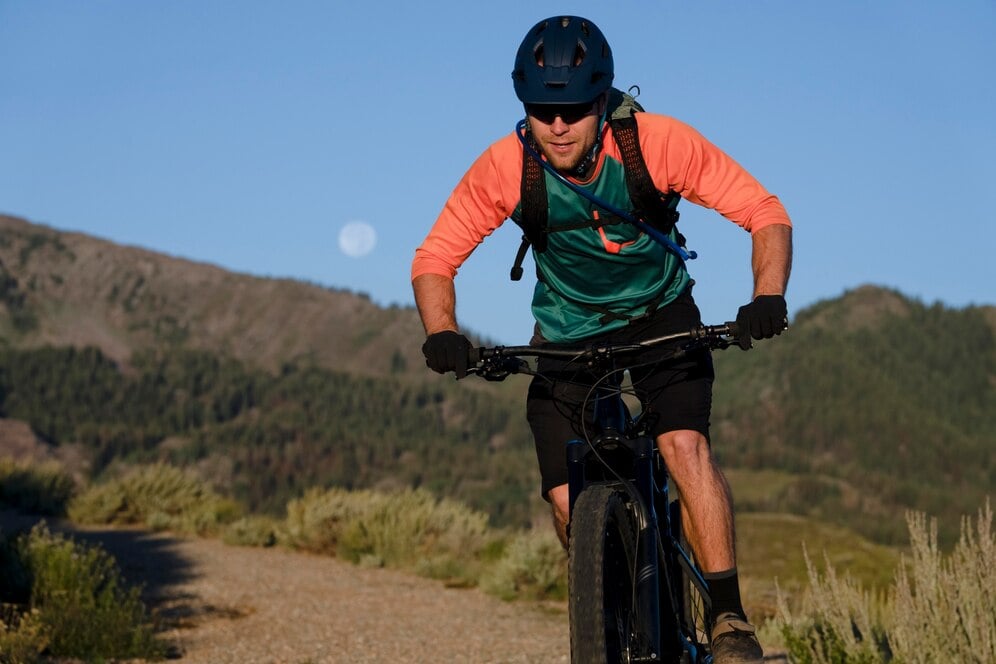
Ergonomics and Health Considerations
When selecting the right mountain bike grip diameter, it is essential to consider ergonomics and how it impacts your overall riding experience. Different materials, like foam, silicone, and rubber, provide varying levels of comfort and shock absorption, which can significantly affect hand fatigue during long rides. Choosing a grip that fits your hand shape and riding posture can improve control while reducing strain.
Some riders with health issues, such as arthritis or carpal tunnel syndrome, may benefit from thicker MTB grips or those designed for small hands to alleviate pressure points. Ensuring that you choose a grip that matches your size and style can prevent discomfort and potential injury, making your biking more enjoyable.
Comprehensive Grip Selection Guide
For a tailored approach to choosing the right MTB grip size, using a chart can help you find the best fit for your hands. This allows you to compare different diameters and lengths, ensuring that you select the perfect match for your bike and riding style. It’s crucial to take into account the handlebar size, as it varies between bikes and can influence your overall control and comfort during rides.
Riders with larger hands should look for the best MTB grips with a big or large diameter for a secure hold. Conversely, those with smaller hands may provide better handling by selecting grips designed for compact hand sizes. Considering these factors will give you a comprehensive understanding and help enhance your mountain biking experience.
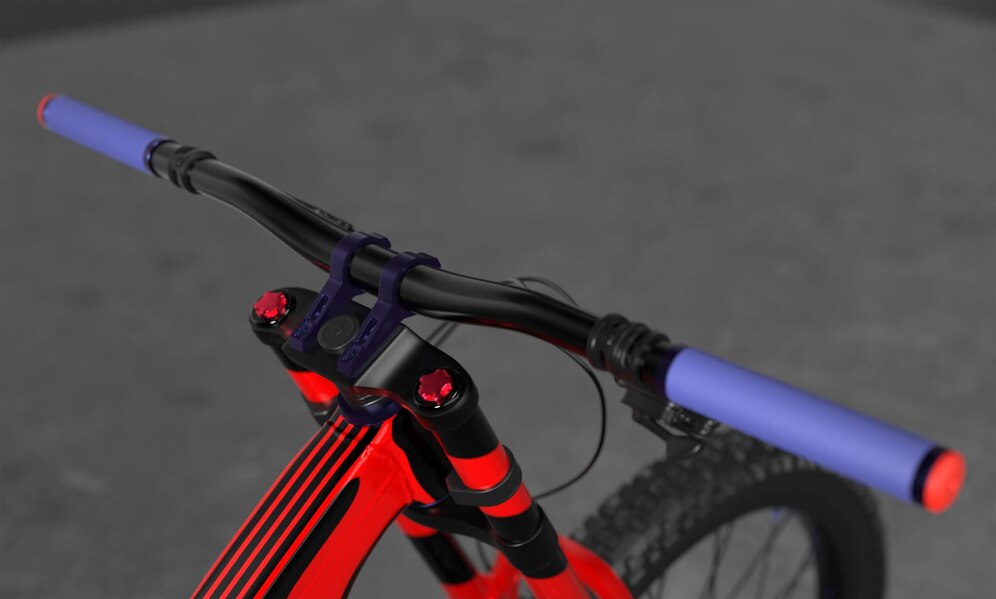
MTB Grip Size Chart
| Hand Size | Grip Diameter (mm) | Recommended Grips |
|---|
| Small | <30 | Slim grips |
| Medium | 30-32 | Standard grips |
| Large | >32 | Thick grips |
Related: Are Electric Bikes Street legal?


